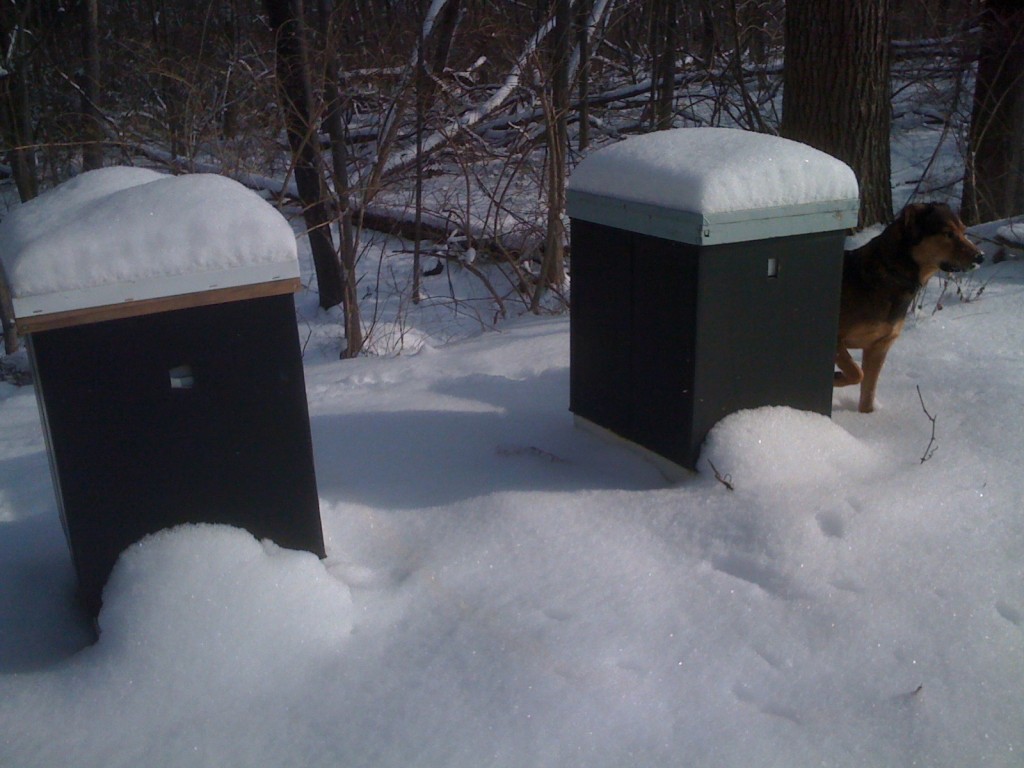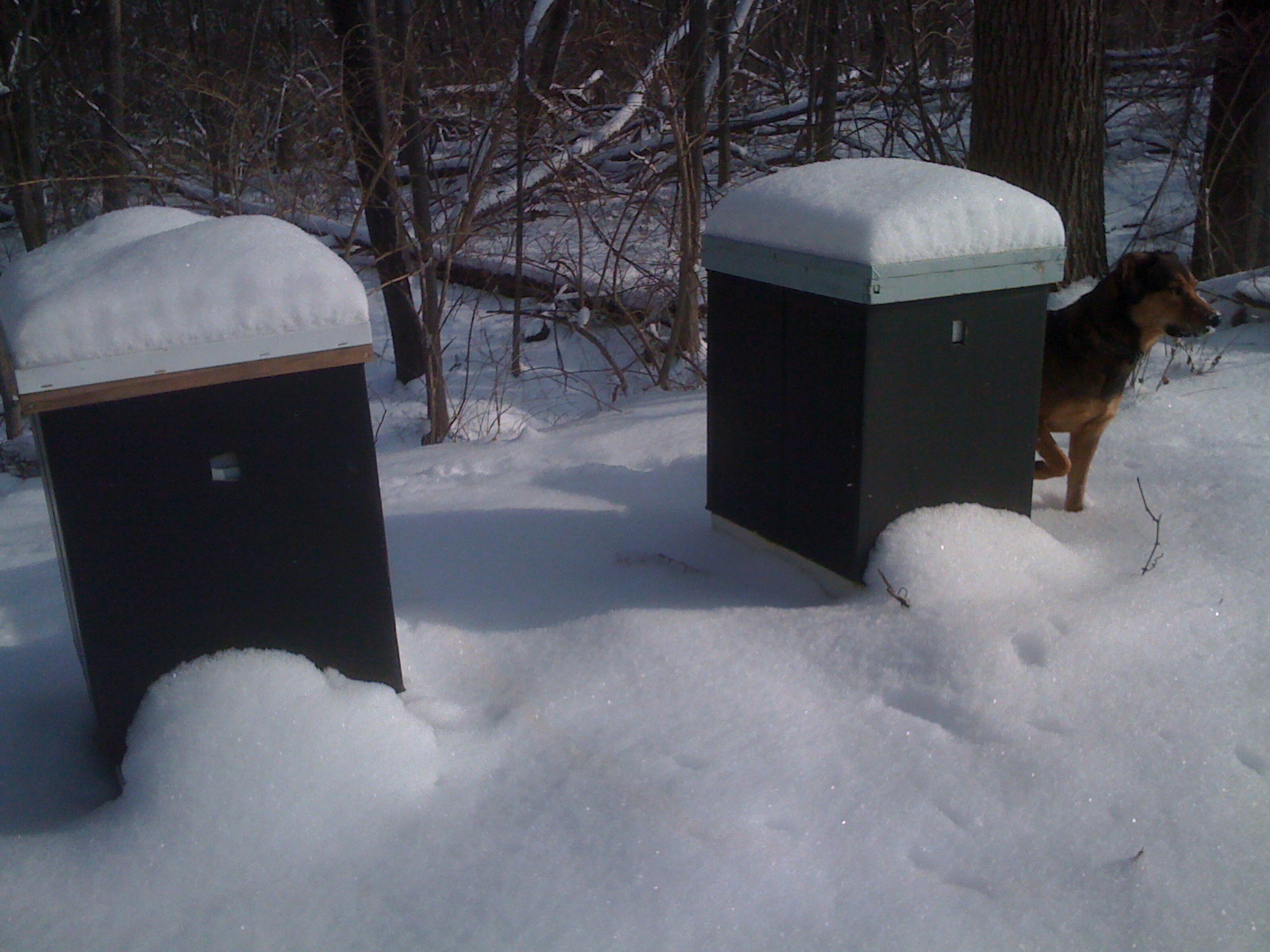Before I could get a new, officially sanctioned entrance reducer in place (okay, I admit it…I haven’t even ordered it yet), snow covered the entrance to both hives. And snow’s supposed to be a great insulator, right? So, I guess things are toasty in there. I hope these bees can stand my hands-off approach.


